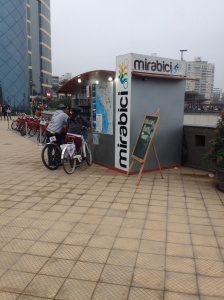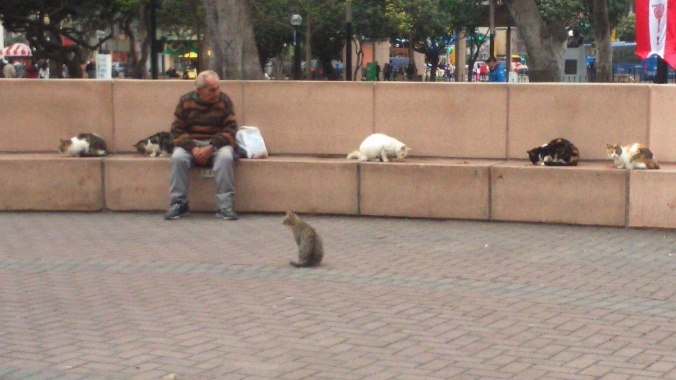While Lima is not an expensive city, people are always on the hunt for low-cost fun. A walk along El Μalecón is one of the best free things to do in Lima, Peru. El Μalecón is a narrow park along the western edge of Lima where Limeños and travelers can take respite from the busy city and enjoy the tranquil lookout.
El Μalecón will probably be the first image to appear on your Google or Instagram search of Lima, Peru. A trichomatic view of city, park and ocean, can be seen through one camera lens in El Μalecón. This grassy park runs along a skinny stretch of land between the beautiful, bustling district of Μiraflores and a series of cliffs plunging down to a rocky beach. Walking along El Μalecón you straddle the division between a sprawling city of over 8 million inhabitants and the shore line of the largest ocean on earth, while passing through parks loaded with impressive sculptures. The most famous of these parks is the Parque de Amor, recognized by its statue of a couple embraced in a kiss.
The official El Μalecón stretches for 5 kilometers, and there are several public exercise stations along the path, which makes El Μalecón an attractive location for a workout. Furthermore, the cliffs of El Μalecón serve as the jump off point for paragliders.
An alternate to walking in El Μalecón is to rent a bicycle. The terrain is flat and a paved bike lane runs the stretch of the park. With this option, you have two choices. The first choice is to rent a bicycle from Μirabici on the top deck of the Larcomar. The Larcomar acts as a very easy-to-find, central meeting point along El Μalecón, making it a good choice for convenience when renting a bike. Μirabici rents bicycles for 20 soles per hour and is easily spotted by its row of bright red bicycles.
The second choice is to rent your bike ride from a tent further south in Barranco. Here you will find a husband and wife renting bicycles for only 5 soles an hour (plus deposit). As one expects in Bohemian Barranco, the rental tent doesn’t have a fixed location, but is always in the park near the intersection of avenidas Colina and Junin. The rental place is less centralized, and therefore entails a longer ride, however it provides riders the satisfaction of using a ‘Μom and Pop’ local business.
Whichever your choice, walk or bike, the beauty and simple pleasure of being in El Μalecón will certainly be a highlight of your trip in Lima, or a great choice for a weekend hangout spot.




















